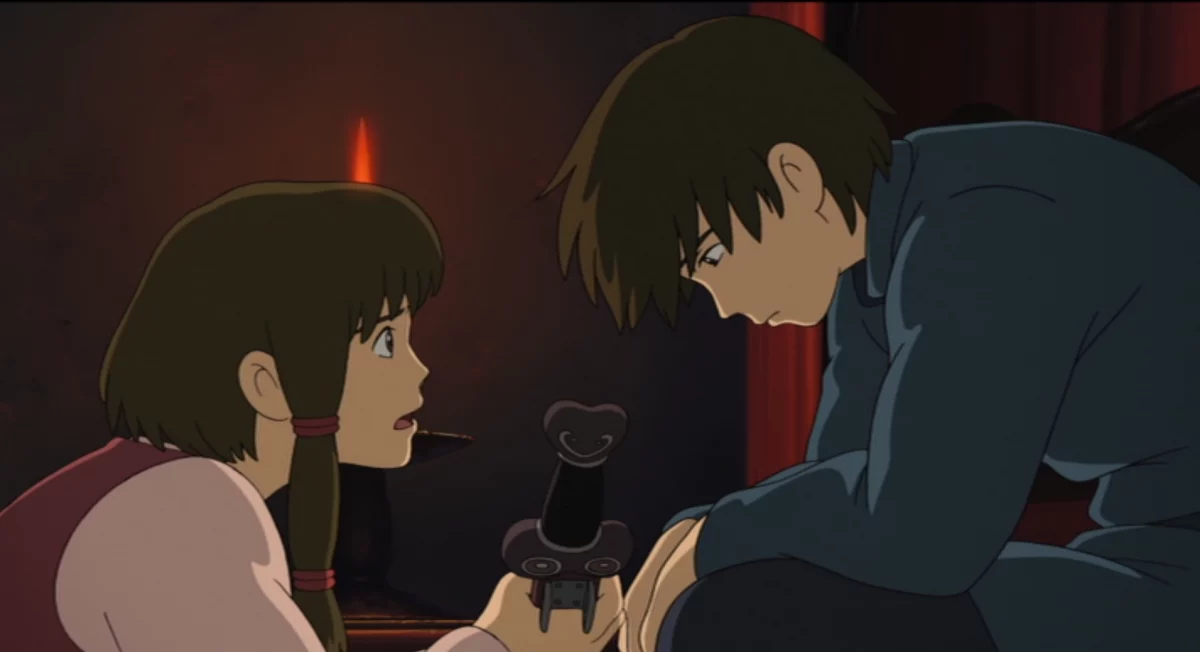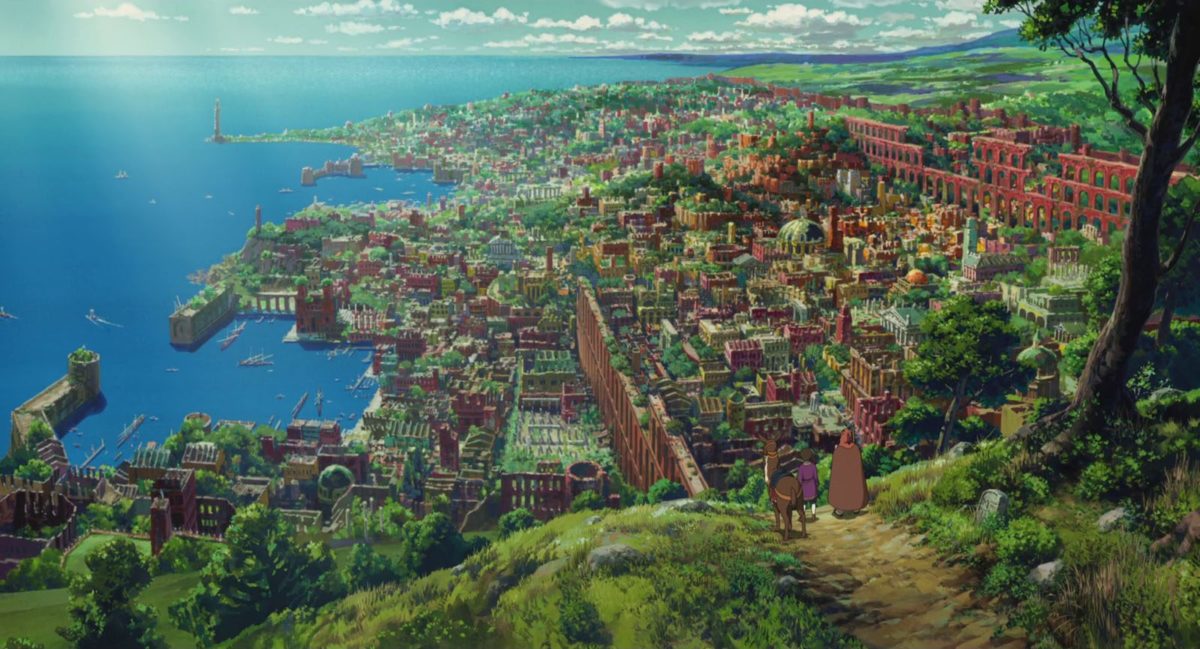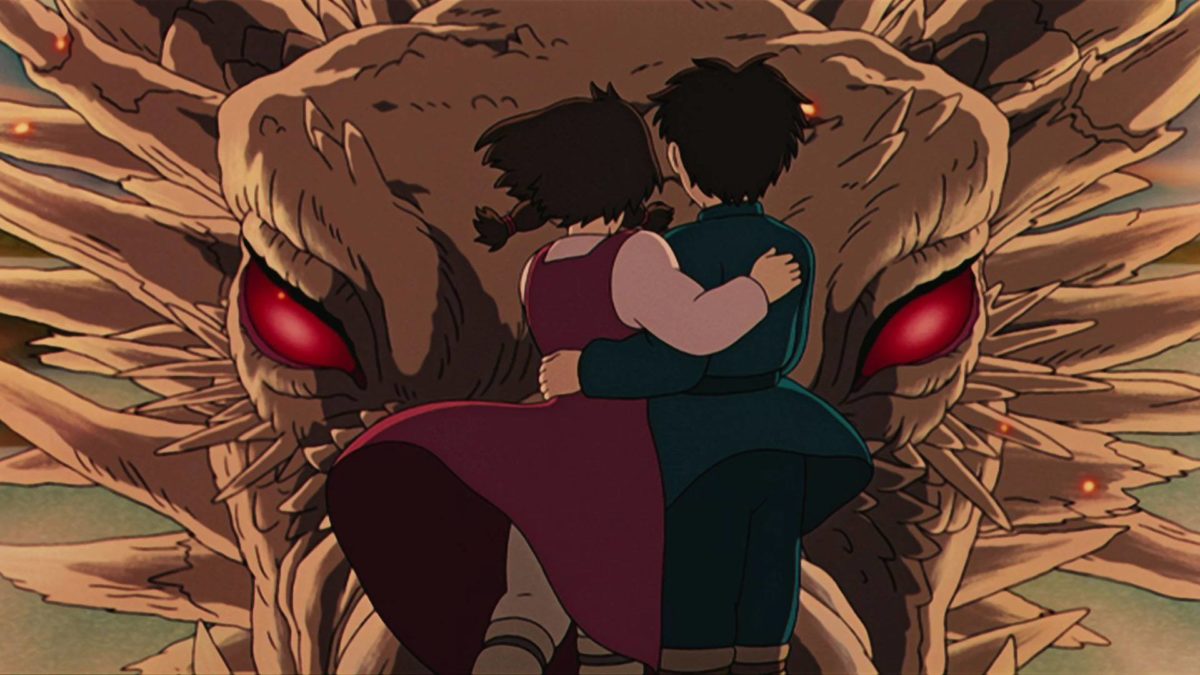Very few authors have any control over the use made of their books by a film studio. Don’t ask the book’s author “Why did they . . . ?” She is wondering too.
These statements open a blog post written by the beloved fantasy author Ursula K. Le Guin. They concern the adaptation of her Earthsea book series by the lauded anime makers Studio Ghibli. The studio up until this point had, for a twenty-year period, only released films to an overwhelmingly positive reception. The work of Hayao Miyazaki, a founder of the studio, was compared to Walt Disney by Western critics such as The Guardian’s Peter Bradshaw, and the Ghibli name came to be associated with prestige animation since Spirited Away’s (Miyazaki, 2001) Academy Award win in 2003. Even 2004’s Howl’s Moving Castle (Miyazaki), which garnered mixed reviews on release, is now considered by some to be the studio’s defining and popular work. This same reappraisal has not been afforded to Tales from Earthsea (Goro Miyazaki, 2006), and sixteen years after its release the film remains the black sheep of the Ghibli oeuvre. A result of various artistic perspectives being dampened by production contexts and a lack of experience, the film wasn’t just a compromised vision, but a work that compromised the perception of Ghibli as master filmmakers.
Like the book series upon which it is based, the Ghibli adaptation of Earthsea stretches over decades, altered by numerous creative and practical revisions. Hayao Miyazaki had been interested in producing an adaptation of the film since the 1980s having read Le Guin’s first three novels. Unfortunately, this artistic appreciation was not reciprocated, with Le Guin assuming that Miyazaki’s animations were identical to the moralistic “Disney-type animation” she “disliked”Ursula K. Le Guin, 2006. ‘Gedo Senki’, Ursula K. Le Guin Archive. Available at: http://www.ursulakleguinarchive.com/GedoSenkiResponse.html and rejecting his pitch based on this view. Eventually, after watching Miyazaki’s early critical success My Neighbor Totoro (Miyazaki, 1988), she regretted this decision, and agreed to give the studio permission when they asked once more in the early 2000s. While a Miyazaki did direct the film, it wasn’t the one responsible for the animation that made Le Guin fall in love with the medium—instead, it was Hayao’s son Goro Miyazaki, who had never directed a feature film.

Taking different elements from across the first four books of the series, the film largely follows Prince Arren as he battles his own demons and the evil wizard Cob alongside the Archmage Sparrowhawk, the kindly Tenar, and her adopted daughter Therru. Though the film was almost unanimously derided by cinemagoers, critics, and fans of the studio, with Christopher Runyon from Movie Mezzanine even branding the film a “trainwreck”, the aesthetics on a surface level still maintain the picturesque, bucolic style for which Ghibli is known. Long takes of painted landscapes—matched with either silence or a swelling score—remain, as does the meticulous architecture in the timelessly rendered towns and settlements. Put against these gorgeous backdrops, though, are the controversial character designs. Though to the untrained eye they maintain the same anime “look”—large eyes and a head with a smaller mouth and nose, and more realistic bodily proportions and movements—the level of detail and distinction is not equivalent to their other works. The lack of variation in character design is the most blatant when comparing Arren and Therru; the latter may as well be the former with a wig and a facial scar. This could be attributed to Goro’s relative inexperience as a director when compared to the filmmakers who had previously helmed Ghibli projects, but this look might (more generously) be seen as an homage to his father’s earlier work, such as in Lupin III: The Castle of Cagliostro (Miyazaki, 1979) or earlier anime features like The Great Adventure of Horus, Prince of the Sun (Takahata, 1968). However, the lukewarm reaction to this style, intentional or otherwise, serves to highlight how it was largely viewed as a compromise of the standard, more detailed and lifelike Ghibli house style. Rather than standing on its own as a film—like Isao Takahata’s My Neighbors the Yamadas (1999), which presents a completely different alternative to the typical prestige anime style. It appears an unwelcome stylistic regression, reminiscent of lower budget anime Ghibli, typically perceived both by viewers and the filmmakers themselves as separate from. This is perhaps best summarised by Kirk Honeycutt for the Hollywood Reporter—for him, Tales from Earthsea is not an anime or a film, but a “cartoon”, implying a childish product that doesn’t aspire to artistic achievement beyond Saturday morning entertainment.
Ultimately, the film was criticised not for the perceived quality of its animation, but for the handling of its narrative. Cobbling together several characters and plot elements from the novels and confusingly giving the film the same title as the fifth book in the series, the complexity of both Le Guin’s writing and of other earlier Ghibli features did not appear to be present. For readers of her work, Le Guin’s prose is witty and relatively straightforward, avoiding excessive adjectives or description—she once quipped that good prose “needs more muscle than fat.”Ursula K. Le Guin, 1998. Steering the Craft: A Twenty-First Century Guide to Sailing the Sea of Story. Eighth Mountain On a perfunctory level, Tales from Earthsea meets that description: spoken dialogue is straightforward, with characters outright announcing both their feelings and the mechanics of their world to one another. But the differences between the media of prose and film means that this seemingly simple transfer of information from page to screen is lost in translation, the written sentences spoken by characters existing in a different dimension when placed into the content of a visual format. Rather than using demonstrative action sequences, subtle visual cues, and wordless scenes to highlight emotions and provide context for the expansive world Le Guin created, Goro uses simplistic exposition and monologues to sermonise the Taoist themes, which are more smoothly interwoven into Le Guin’s writing.
As well as with regard to the aesthetics and dialogue, for audience members familiar with the source material, Earthsea was deemed to be less innovative and progressive than the books upon which it was based in terms of social justice. Though Ghibli are known for putting capable young women front and centre in their productions, gaining a feminist reputation in comparison with animations by Disney, they had never truly broached the subject of race until this point. Their characters fell into one of two camps typical for anime releases: explicitly Japanese, or more mukokuseki (stateless) with an implication of whiteness by their name and/or surroundings. Whisper of the Heart’s (Kondo, 1995) West Tokyo resident Shizuku Tsukushima, for instance, is clearly Japanese, while characters like Ursula and Tombo in Kiki’s Delivery Service (Miyazaki, 1989) may be interpreted as either Japanese due to the production contexts of anime or white Europeans because of their names and the Swedish-inspired city in which they reside. This is also the case with Earthsea’s cast of characters. However, this creates an issue of fidelity with the source material, namely, that Therru, Sparrowhawk and Arren are all intended to be non-white characters with ‘copper brown’ skin, as an intentional move by Le Guin in the 1960s to combat the white-centric hegemony of fantasy literature. In fact, the only character whose race was visually retained is the blonde haired and blue eyed Tenar, raising questions about the potential colourism of the filmmakers. While Ghibli insists that their films are made for domestic audiences, with Japan being an ethnically homogenous country, this intentional removal of racial difference while retaining explicit whiteness compromises Le Guin’s original desire for representation, especially with Ghibli’s popularity on a global stage. Although this maintains the notably consistent aesthetic of anime characters audiences were familiar with, it prevents a truly international evolution of the medium that matches Ghibli’s scale, to recognise and depict characters of races beyond Japanese and/or ambiguously white.

For all the issues with the film, there is a moment when the oversimplified story and aesthetics allow for a scene of quiet contemplation, more than the sum of its shallower parts—Therru standing alone on a hilltop, singing a song out to the world. Tamiya Terashima’s composition has the same peaceful, melancholic aura as standard Ghibli collaborator Joe Hisaishi’s scores, and in both the original Japanese language release and the English dub, Therru’s pared down vocals against the sparse backdrop provides a much-needed moment of quiet reflection. These moments in Ghibli features, inspired by the Japanese idea of ma or the peaceful emptiness between moments, often appear after periods of intensity or action: the serene train ride break in Chihiro’s adventure during Spirited Away, for instance, or the home cooked ramen that follows Ponyo’s tsunami. The dramatic scenes that precede Therru’s song tend towards Le Guin’s criticism of the film comfortably “externalising”Ursula K. Le Guin, 2006. ‘Gedo Senki’, Ursula K. Le Guin Archive. Available at: http://www.ursulakleguinarchive.com/GedoSenkiResponse.html evil into a villain that can be struck down with a sword—this point comes in the form of the evil wizard Cob and his (literal) moustache twirling minions. Although these characters are something of a compromise on both the abstract evils of the books—the ‘shadow’ that Sparrowhawk summons in book one, for instance—and the more complex, human antagonists of other Ghibli animations. But in this moment, this becomes easy to forget; the lack of depth in the screenplay is put aside, allowing the visuals and music to tell a much grander story. From this scene, it’s easy to imagine a film that may have existed in another life, one that pulled primarily from Le Guin’s feminist fourth Earthsea book Tehanu, which focuses on Therru as a powerful magic user in a patriarchal society that devalues women’s powers, following the Ghibli tradition of strong girls making their way through a new world (perhaps even with an explicitly non-white and non-Japanese protagonist).
Though tempting to speculate, it is impossible to know whether in the 1980s, with Hayao Miyazaki as director and Le Guin’s original story suggestion of a smaller adventure taking place between her first two books honoured, a Ghibli Earthsea adaptation could have been a film without such blatant flaws or concessions. As novels that implicitly emphasise the role of language and words above visual spectacle, to the extent that the entire magical system is based upon knowing the true name of a person or object, adapting them successfully to a visual medium is certainly challenging. Unfortunately, the compromised existence of Tales from Earthsea now functions for many cinephiles to highlight the superiority of the Studio Ghibli releases that came before and since, confirming that Ghibli’s brilliance comes not only from their masterful visuals, but the depth of their themes and writing. Rejecting the final product as an outright failure would be to deny the inherently collaborative process of filmmaking, which relies on compromise in many cases to move forward and produce any kind of final product, especially when compared to authorship of a novel. Funding must be secured, hundreds of employees must be paid and directed, and the film is cut and recut to meet the demands of a court of producers. Though the artistic choices made by an inexperienced Goro Miyazaki and approved by Ghibli can be criticised, the individual animators, musicians, and actors—those who contributed to the clear skill behind much of Tales from Earthsea—deserve to be acknowledged as a part of the studio’s legacy. Ghibli’s Earthsea may be a compromised vision, doomed to exist as the shaky centre of a spider’s web of other, more well-constructed texts, but the effectiveness of scenes like Therru’s song still shine through and remind us of the value that can be found even in the most maligned films.
